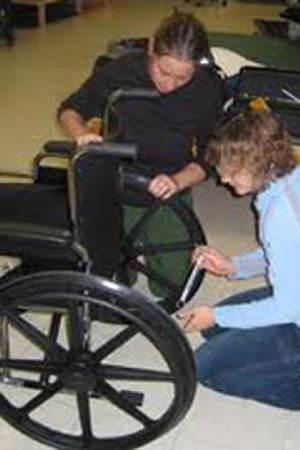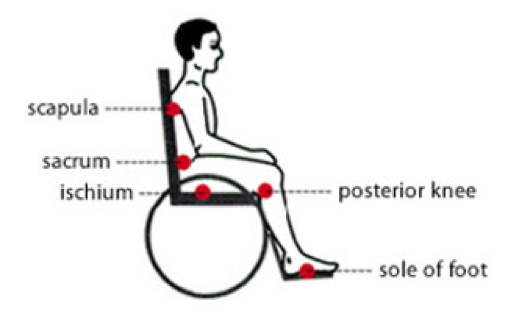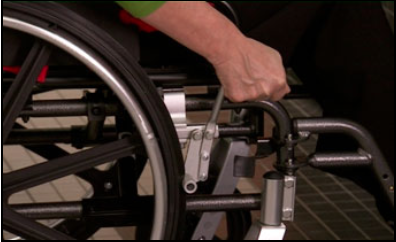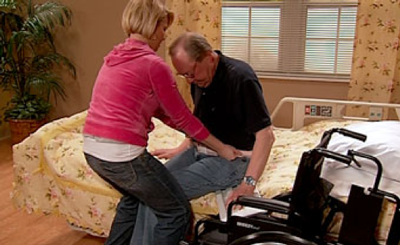
Think of a wheelchair as your car. It will need a regular tune-up for proper functioning. Regular maintenance of a wheelchair requires cleaning, inspecting and adjusting all parts of the wheelchair and seating system. If you follow a regular maintenance schedule, you will have fewer problems and lengthen the life of a chair.
If a person will be using a wheelchair all the time, their home should be wheelchair accessible and safe. There are some simple steps you can take to make a person’s home wheelchair accessible.
If you need help in making changes to the home, a Certified Aging-In-Place Specialist (CAPS) can help. The specialist can design and adapt a home so that a person can continue living in a familiar environment that is safe. The CAPS will design and build attractive, barrier-free living environments.

Points of skin where pressure ulcers can easily form
A person who sits in a wheelchair all day is physically disabled and at risk for forming a pressure ulcer, or bedsore. A pressure ulcer is an injury to the skin due to constant prolonged pressure or a combination of pressure and friction. Constant pressure on an area of skin such as the buttocks and hips reduces blood supply to the area. Over time this causes the skin to break down and form an open sore or ulcer.
Check the Person’s Skin
Look at the person’s skin routinely each day to be sure no pressure areas are forming.
After sitting in one position for a long time, the person is at risk for a pressure ulcer. A Stage I ulcer is the first type to form. The skin becomes red or discolored and the color does not fade within 30 minutes after the person changes position.
The skin may also be painful or it can become numb because of the long time the tissue was without oxygen. The person you are caring for needs to understand the importance of changing positions in order to prevent skin injury.
Have the Person Change Seat Position
Be sure a person in a wheelchair moves their buttocks and hips up and off of the wheelchair seat every 15 to 20 minutes. There are cushions you can place on the seat that will help to relieve pressure. There are also wheelchairs with tilt systems for pressure relief. Consult with your doctor, medical equipment store, or home care nurse on the type of pressure relief devices to use.


No special equipment is needed for using a wheelchair.